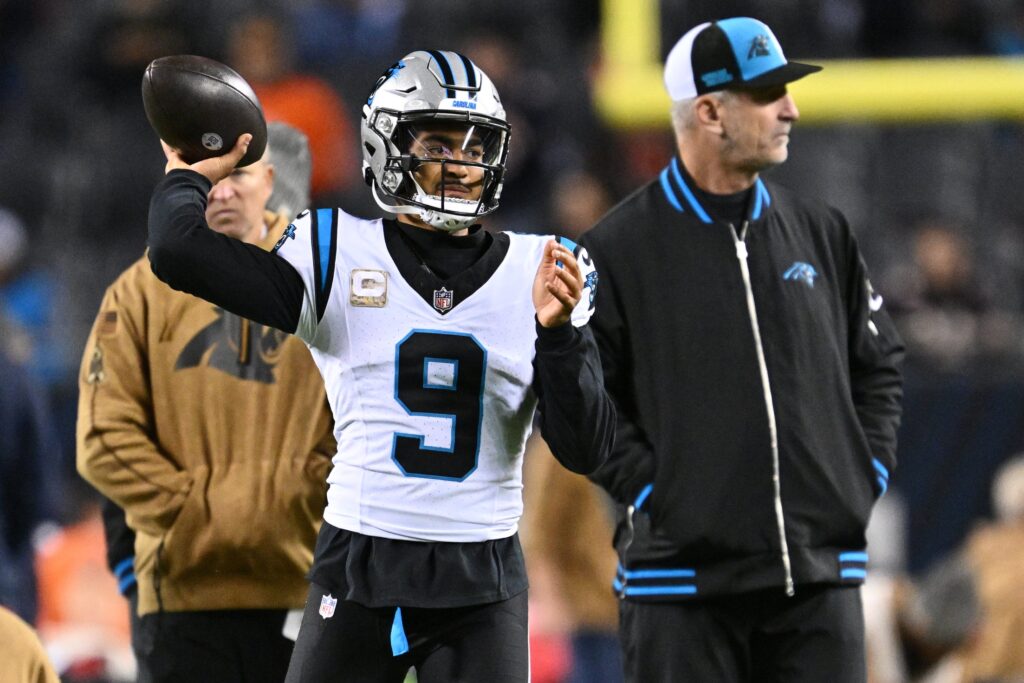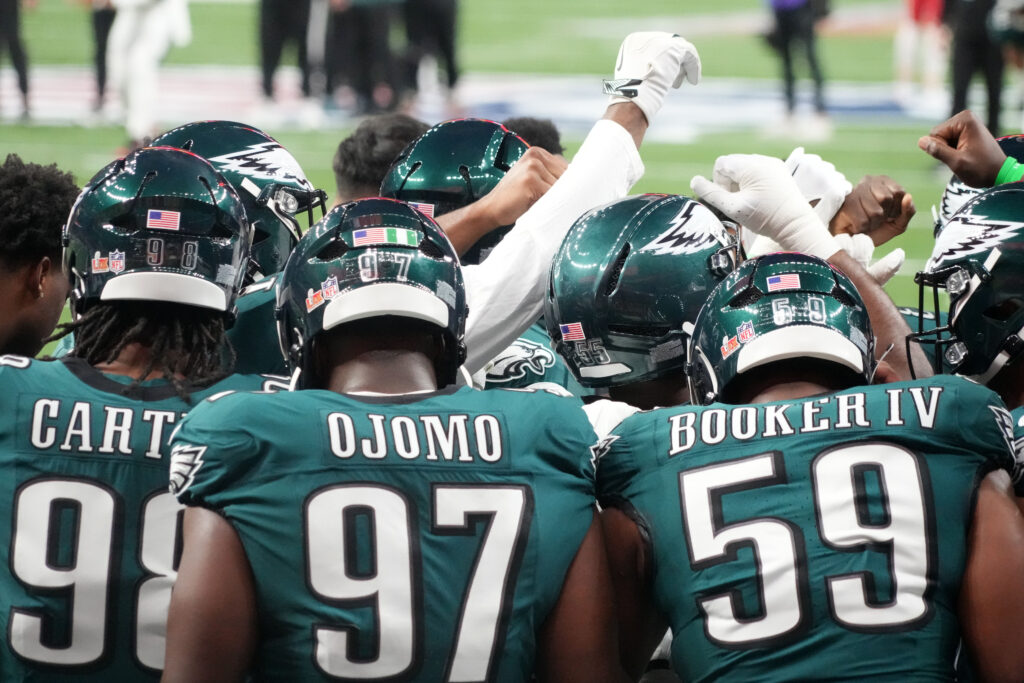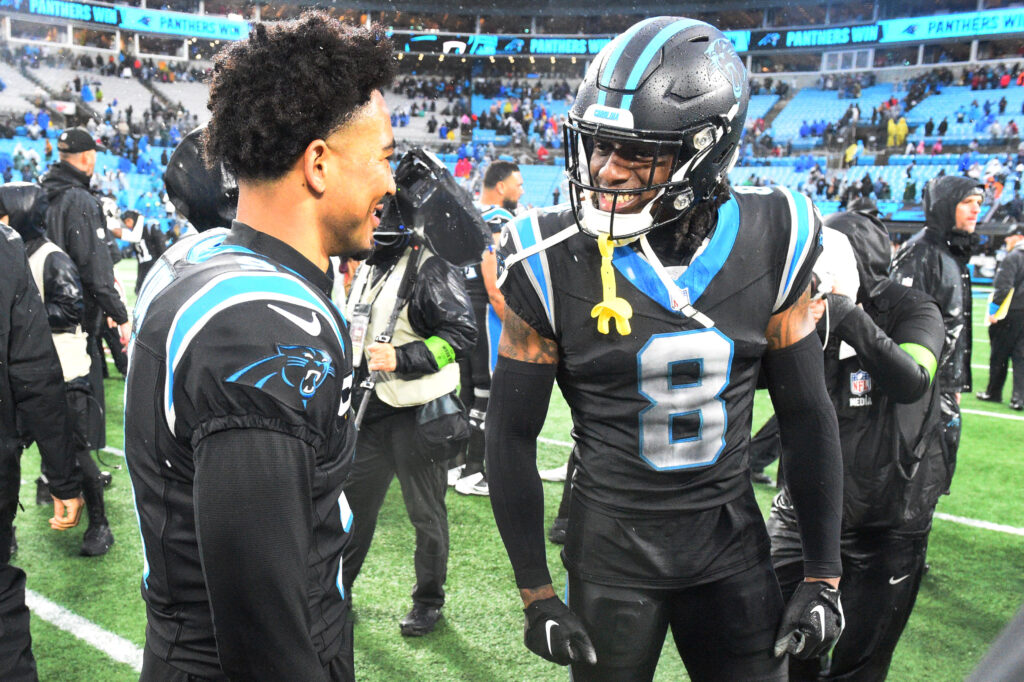It’s easy to see why they did it. A small market team with a new owner, stuck riding the veteran quarterback carousel to nowhere, following their fifth straight losing season —something needed to change.
The Carolina Panthers were initially drafting ninth overall last spring, but with a potential franchise quarterback available at the top of the draft, they felt it was time to make a splash move to turn their franchise around.
On March 10th, Carolina agreed to send their ninth overall pick, the 61st pick, their 2024 first-rounder, a 2025 second and number one wide receiver D.J. Moore to Chicago for the first overall pick in the 2023 draft. The Panthers took their limited chips and pushed them into the center of the table, placing the entire weight of the franchise on rookie quarterback, Bryce Young.
Since then, the results have been predictably poor. An offense barren with talent has put too much of a burden on Young, landing this team with a 1-8 record. If this pace holds, the Panthers, who paid a fortune to move up eight picks, will have given up the first overall pick in 2024, as part of their trade to get the first overall pick in 2023. An absolute disaster and one that will set the franchise back years.
While it was easy to understand why the Panthers made this trade, it was also easy to see in the moment, that was a bet with a narrow path to success.
The Cost of the Bryce Young Trade
The State of the State
When the Panthers made this trade, they were not a roster that was a quarterback away from contending. This was not the 2021 49ers making a trade-up for Trey Lance.
They certainly had some building blocks to work with, Brian Burns is a terrific edge rusher and is paired with Derrick Brown on the defensive interior. Taylor Moton and 2022 sixth overall pick Ikem Ekwonu were intended to be two high-level offensive tackles, something few teams possess within the league.
Add in cornerback Jaycee Horn, who has flashed high upside potential despite having a number of injuries early in his career, and you could paint the narrative that this team had a strong young core to build around.
Yet there were also glaring roster holes. By giving up Moore in the trade, the Panthers opened the season with easily one of the least talented group of receivers in the league.
Their running game was supposed to be held down by free agent signing Miles Sanders, who has since lost his starting job for the pedestrian Chuba Hubbard. Tight end remains a wasteland with journeyman Hayden Hurst holding down the position and the entire interior of their offensive line simply isn’t getting the job done.
Defensively, the team lacks a secondary pass rusher behind Burns, corner depth behind the oft-injured Jaycee Horn, who is once again on injured reserve, and any star power on the second or third levels.
By giving up so many future draft picks and their number-one receiver, the Panthers were leaving themselves with few avenues to address these problems. It’s also under-discussed that when you are low on talent at premium positions like receiver and low on draft picks, the front office gets cornered into using their only assets to solve their biggest problems. Something that is obviously suboptimal.
This is what makes trade-ups like the one for Bryce Young so risky. The quarterback you are drafting doesn’t need to just be good. He needs to be so good that he can overcome the flaws within his team that his own front office will be unable to solve for years.
How many current starters in the league are even capable of this? Maybe five? This is a lot to expect of a quarterback who is an outlier physically at five-foot-ten and lacks elite traits.
What Could Other Teams Do?
The Panthers will certainly not be the last team to trade up a haul of draft picks to try and find the next franchise quarterback. It’s a tale as old as the NFL draft. So, the next time a team finds themselves in a bad quarterback situation, what can they do to mitigate the risks of trading up?
Accumulate Future Draft Capital
Rarely do teams suddenly need a quarterback. Many teams every season are riding the veteran quarterback carousel, just trying to be respectable while they push off solving their long-term problem under center.
These teams should be doing everything they can to stack extra draft picks in the future. Whether it’s trading aging players away, trading down in the draft, or simply trading away current draft picks purely for future ones, the idea is to have ammo ready for when an expensive trade-up is needed, without needing to move draft picks two years away.
Imagine if the Panthers were well-run during the Matt Rhule era, if they had accumulated extra draft capital for a couple of years so when they did decide to pull the trigger on a trade-up, they were sitting on a war chest of draft picks. How much better would their outlook be?
Be Okay Being Wrong
In every single draft, NFL front offices will do a great job breaking out players within a positional group and putting them into tiers, but research done at Pro Football Focus by Timo Riske has shown that teams are not great at selecting the best players within these tiers.
In other words, if you take the 2023 draft as an example, we knew at the top it was a three-quarterback class, but history will tell us we are not very good at knowing which of those three quarterbacks will fail and which will succeed.
Teams can use this information to their advantage. Instead of pushing all of your chips into the middle of the table to go get your guy, see if the last quarterback taken could be had for a much less expensive trade-up.
The Texans in the same draft, gave up picks 12, 33, a 2024 first and third to receive the third pick and a 2023 fourth. Could the Panthers have held onto Moore and still made a big splash at quarterback by sending a similar deal to Arizona for Anthony Richardson?
It’s Not Over Yet
This isn’t a memorial service for the Bryce Young era in Carolina. It wouldn’t shock anyone if the rookie quarterback needed more than his first nine games to figure out NFL defenses, but there is real concern that this flawed roster lacks the resources to solve many of their issues.
The bigger takeaway is, should teams even be willing to make trade-ups that cost this much? Given the hit rate of quarterbacks at the top of the draft, is it worth pushing all of your chips into the middle of the table, needing this player to become the star that C.J. Stroud has looked like this year, for the deal to be a win? Or are there better ways of running a team, strategies that allow you to still take a gamble on a high-end rookie quarterback while mitigating the risk?
Main Image: Jamie Sabau-USA TODAY Sports



